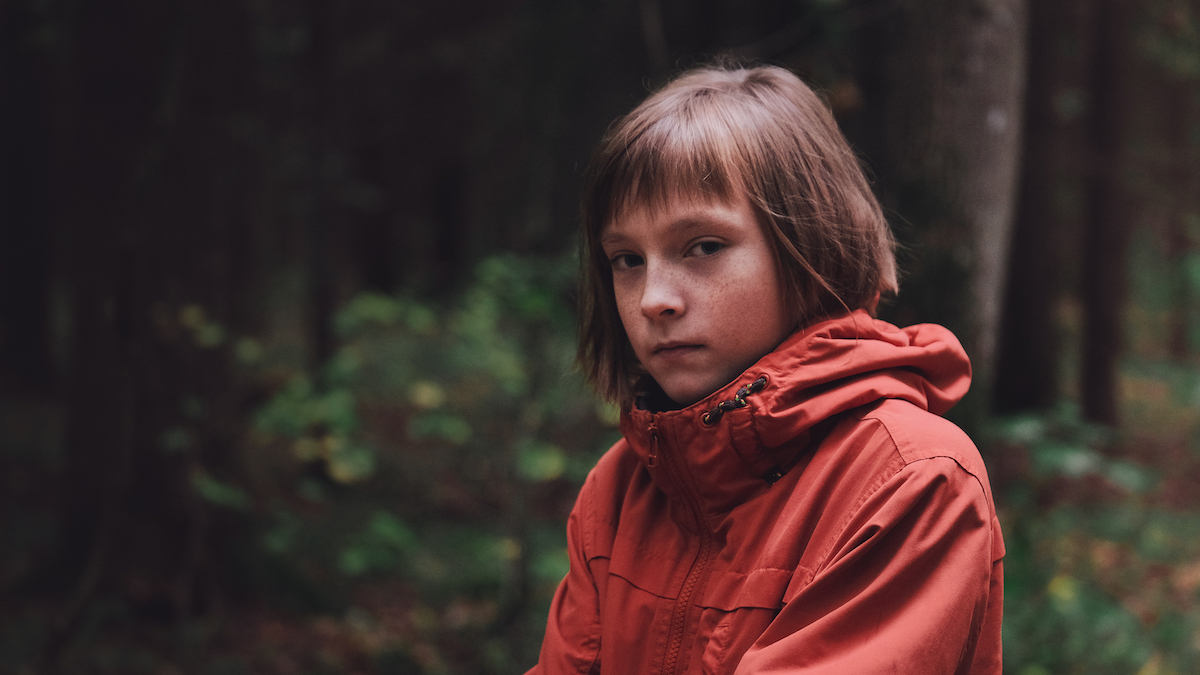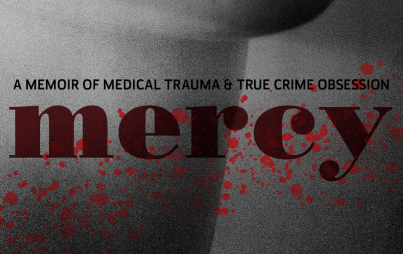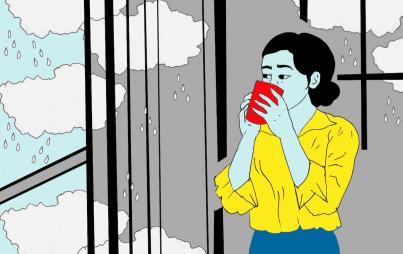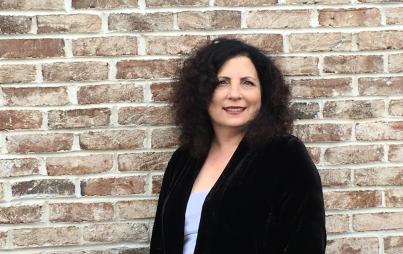
Photo by Ivan Stern on Unsplash
This article first appeared on Your Tango and has been republished with permission.
Imagine going back to your most vulnerable years as a child or a teenager. Stability, love and care are what you need in order to flourish.
Now imagine you’re a child in the foster care system.
You are without your parents, for better or for worse (it's traumatizing either way), and everyone you know is gone.
You may be in a new town or a new state. You are likely in a new school. You are around completely new people.
Your bedroom is gone. Your bed is gone. Your toys or belongings are gone, and you are likely separated from your siblings.
Anchorless, you try to make sense of the chaos.
Every time you see your social worker, you worry you will be taken away again.
He or she asks you questions about abuse or physical and emotional neglect, but language fails you. They introduce you to people who will be your new parents, probably temporarily.
You don’t want to be here — wherever it is that you are —and you can’t imagine what could be next.
Your heart cannot contain the hugeness of this trauma because this is a nightmare. You are too traumatized to relay the grief, so it sits inside, morphing into anxiety, depression, or even violent tendencies.
You can’t tell your friends or anyone else about your life because you will seem weird or unrelatable.
This is what the traumatic experience of being a foster kid is like. I can vouch for it because I was a child in the foster care system, and I have suffered its lasting effects.
Due to my childhood trauma, instability, and emotional neglect, I still grapple with mental health issues such as chronic stress, the need for control, fear of abandonment and inflexibility around change to some degree.
I also live with a chronic immune-mediated inflammatory disease called ankylosing spondylitis, which I believe was triggered by my body’s elevated chronic stress levels.
This isn't such a wild theory, as science supports the theory that PTSD, stress, and childhood trauma are correlated with immune-mediated conditions like mine.
According to the U.S. Department of Health and Human Services, Administration for Children and Families, Administration on Children, Youth and Families, Children's Bureau's 2018 Adoption and Foster Care Analysis and Reporting System AFCARS) Report, 442,995 children were in the foster care system in 2017, with 269,690 kids entering the system that year.
The average age was seven to eight years old, and two-thirds of foster youth were living in non-relative and non-adoptive foster homes.
Some foster youth are fortunate enough to enter loving foster homes, while others are placed into homes that are potentially even more harmful than the homes from which they were removed.
Thousands of foster kids are neglected, abused, and assaulted in foster homes — places where they are supposed to be safe.
While it can be challenging to determine how many children are in neglectful or abusive foster homes due to a multitude of factors, a 2004 study in the greater Atlanta area found that for children who had recently entered the foster care system, "15 percent had experienced abuse, neglect or other harmful conditions in just one year."
The AFCARS Report also states that each year, nearly 18,000 children will never reunite with family or join a new one at all.
As I did, they will emancipate or age out of the system — alone.
Despite the vast spectrum of experiences, the bottom line is that hundreds of thousands of children were and are uprooted and displaced during a stage in their development when the brain’s "wiring" is particularly susceptible to negatives changes caused by both physical and psychological trauma.
The instability of our foster care system is detrimental not only to the well-being of this nation’s most vulnerable population of children, but also to the well-being of society as a whole.
According to a report from the Urban Institute — a nonpartisan group that "publishes studies, reports, and books on timely topics worthy of public consideration" — the negative effects of childhood instability have not been studied enough despite appearing to be a powerful negative force in a child's life.
Defined as “the experience of abrupt, involuntary, and/or negative change in individual or family circumstances, which is likely to have adverse implications for child development," instability is too often overlooked when assessing a child's overall risk factors for developmental issues.
The paper explains that in order for children to develop to their fullest potential, they "need safe and stable housing, adequate and nutritious food, access to medical care, secure relationships with adult caregivers, nurturing and responsive parenting, and high-quality learning opportunities at home, in child care settings and in school."
Chronic and prolonged adversity and instability, the study continues, cause "an over-activation of the stress response system so the body is constantly in a heightened state of arousal, which disrupts normal brain and organ development and, consequently, damages brain architecture and neurocognitive systems.”
According to Cynthia K. Goeller, LCPC, LMHC, a therapist who works with foster youth, most of the kids she’s seen show symptoms of “PTSD and attachment related issues, anxiety, and depression, from neglect, physical abuse, sexual abuse, and multiple placements.”
And although many wish it were true, the idea that once you “grow up” you’ll suddenly heal or move on from this trauma is simply false.
In reality, it may take years or decades of work in therapy to unravel the trauma of foster care and the abusive or neglectful circumstances that led up to it, if that ever happens at all.
My journey into foster care started in my early adolescent years.
My parents suffered from the disease of opioid addiction — leading to a slew of homeless shelters, rehabs, and outpatient programs.
At first, I lived with my brother (seven years younger than me) at my aunt’s elderly parents’ house in a completely new city.
We barely spoke to our mother, who was working hard to get better.
We shared a bed in a dirty, dark attic, and the feeling of living in that home was that they were doing us a favor. We were boarders. We were an inconvenience.
Obviously, they were kind enough to let us live there — but as an adult, I cannot help but remember the coldness and the isolation we both felt.
Soon enough, they told us we had to leave; they were in their 80s and simply couldn't raise us. Perhaps we drained their time or resources.
I wouldn’t know because — like so many other former foster kids — the state won’t relinquish my own foster care records to me.
Once we left our relatives' house, our social worker put us into two different homes.
The memory of the day my brother was taken by car to his separate foster home is hazy. Sometimes I am violently hit with some portion of the recollection — it’s as if I could feel the breeze on my skin as I stood there watching the car leave.
Other times, when I try to remember it, I come up entirely blank. Whole years pass through my mind as clouds; they move and morph and disappear.
There are so many holes in my memory that I spend hours late at night obsessing on filling them in, stitching the pieces of myself together as if I am tattered fabric.
And maybe I am. Maybe I’m torn.
But then I have to remember — this happened to me, and I’m not to blame for missing memories.
One study reported on by Georg Northrup, M.D. in Psychology Today found that early childhood trauma, especially neglect and abuse, rewires the brain in such a way that people may continue to experience a lasting disruption in their cognitive and emotional processes well into adult years.
Memory is affected as well, and I'd theorize this is to protect us from the intense replay of trauma.
"Childhood trauma," Northrup states, "is encoded in our brain’s spontaneous activity in adulthood. Therefore we can never forget it and it impacts all our actions and experiences in the present."
According to the Academy of American Pediatrics (AAP), foster youth are an extremely at-risk population: “Children in foster care suffer a high incidence of developmental delays, as high as 25% in some age groups. Rates of clinical Post Traumatic Stress Disorder as high as 25% have been reported. Over 80% of children aging out of foster care have received a psychiatric diagnosis.”
That’s a huge portion of the population living with mental illness and mostly slipping between the cracks, especially if a foster youth ages out of the system without the proper resources.
There is no way to accurately express the grief experienced by a child living a new life in a new culture, in a new city, with new people.
You Might Also Like: Everything I've Learned About Living With Abandonment Issues
It is almost cinematic in its abruptness; you simply wake up one day and you’re in a new world. Somehow, you’re expected to behave and be grateful — because otherwise, you could go back into the system.
I was forgotten, and so I began feeling like I was forgettable. Unimportant. Weird. Ugly.
I began isolating myself from my peers — which left an indelible mark on my social behaviors even today.
I’m better with each passing year, but the voice in my head that says, “you’re not good enough” still rages on.
This is common in foster youth, who are perpetually cast as “other.” They are judged on the behaviors of their parents or caretakers, although they had no say and gave no consent to what would happen to them.
One former foster youth I spoke with, Michaela Brown of Avon Lake, OH, said, “I was in foster care from 16-18 but I was involved with children's services since I was 15. I was in four different homes from 15-18. It would have been nice to have been treated as equals to the other kids. It felt like I was always less-than other kids in the homes I was in.”
Brown went on to say that school was also difficult for her, because she felt she had to keep a secret.
“I couldn't go over to someone's house or hang out, and this made me feel like a freak. I was extremely angry all the time. I had so much anxiety all the time it made me sick ... And I felt extremely alone because there wasn't really anyone I could talk to about how I felt.”
As another foster youth, high school senior Poppi O’Donnell, writes, “Growing up in the system can be difficult for a number of reasons, but being embarrassed about your own identity as a foster youth because of others lack of exposure to the term is absolutely ridiculous. It feels like you can’t truly be yourself. You are constantly trying to conform out of fear of being ostracized, so you leave out this big part of yourself and end up being incomplete as a person.”
As O’Donnell continues to explain, this secret — this internalized shame — takes a toll on us.
“We become ashamed of own identity since all we see are these sad, abnormally fragile children who are filled to the brim with problems. And we spend life feeling like we’ve got a secret we can never be liberated from; it’s ingrained in who we are, and society tells us that our secret makes them uncomfortable. So we keep ourselves hidden, for the most part, in order to appease the general public’s ignorance.”
Even if we are adopted or cared for temporarily by a new family, our problems don't just magically go away.
According to the AAP paper cited above, “Adoptive and foster families may struggle to understand and support their new children. Because these children may have experienced significant trauma prior to their placement, they may view and react to people and events in ways that may seem unusual, exaggerated, or irrational.”
Foster youth might react to their trauma by acting out, rebelling, throwing fits, disassociating, or refusing to connect.
All of this is normal, although knowing that does nothing but further engrain the stigma the foster youth must shoulder.
And while this is hard for most, if not all, foster youth — it can be significantly worse for foster youth of color or in LGBTQIA communities.
Sassafras Lowrey, an advocate and Lambda Literary Award finalist, says, “From an advocate perspective, I think the biggest hurdles LGBTQ youth face in [foster] care are systematic failures rooted in homophobia and transphobia, from case workers to supervisors to foster parent placements.”
This might lead to youth not being placed in a loving or supportive home, increasing the risk of homelessness and deeply-rooted trauma.
In fact, according to The Children's Bureau, minority children are overrepresented in foster care — especially Black foster youth, who are in foster care at 1.8 times the rate of the general population.
The problem is that, according to the brief cited above, these kids face racial bias and discrimination at the hands of caseworkers and foster parents.
In addition, kids from families of color often face a lack of resources when it comes to their care — increasing the potential for these kids to simply vanish within the system.
Imagine what that sort of invisibility does to a child? Imagine living your life erased, shamed, and told that you are unworthy or broken?
The malleability of the young mind may simply fold this into its identity, and it will become “truth.”
In Brooke Webb Lamberson’s TEDx talk, Foster the Revolution, she states, “When a community is seeking the healing of its children, they’re seeking a revolution.”
She's not wrong.
As someone who has been speaking out and writing about my foster care experience as well as the experience of others, I often find myself wondering how to reduce the harm done to the children.
This challenge may seem big and heavy and hard to solve — and it is — but that doesn’t mean it shouldn’t be on everyone’s minds all the time.
Everything else makes the news; foster youth’s stories should, too.
We need better resources for families who are dealing with poverty and addiction.
We need better assurances that homes are safe.
We need better care for youth who are placed into foster care.
And we need better (and more) foster homes, as many states are in a crisis where there aren’t enough foster families.
Goeller says that a lot of work needs to be done to better the system: “We need to decrease the ratio between kids and workers.”
More than that, people themselves are also afraid of the foster child stigma, or they’re frightened of getting too attached to a child they will only care for temporarily, as Lamberson points out.
But isn’t that the point?
Foster youth need that attachment and care. If one adult can provide stability, compassion, patience, and the ability to make space for grief, that person can change a child’s life.
Although my pain was extreme, I still had my needs met by my foster families and I was encouraged to do well in school. Not every foster child is so lucky — especially when they are moved from home to home at such a young age.
Beyond helping families stay together and finding loving homes for kids, trauma reduction and resources must be at the forefront of our minds, as well.
As Goeller says, “We need to prepare foster parents adequately by focusing on how to manage trauma reactions in the kids in their care. We need to teach foster parents how to& discipline and parent children who have been traumatized. If we don't, our best intentions will re-traumatize the children in the system.”
Resources like those provided by the AAP are a starting point; they can show foster parents and other adults (like teachers or counselors) how to identify trauma in foster youth as well as how to react to it with compassion and care — hopefully reducing the long-term effects of trauma.
But these resources must be taught and enforced.
If we continue neglecting the huge subset of the population, we will teach our kids that are not worth fighting for.
Lamberson is right: This issue requires a full-on revolution.
Fortunately for me, I did eventually find a safe, lasting foster home.
I lived with them for more than three years — before and through my second go-around of 10th grade and through 11th and 12th grades.
I was cared for.
And yet, the trauma of having to suddenly fold myself into a new life left a scar I’ve yet to heal from.








